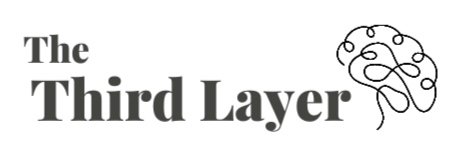Self-expressive vs problem solving creativity
I read a post on LinkedIn the other that got me thinking. And writing. And Third-Layering.
The folks at Emergent Futures Lab laid out the four-step model that folks have been using to think creatively since Aristotle and Socrates were chatting it up at the agora. In sum:
The four-step model for creative thinking:
Inspiration
Ideation
Planning
Making
As I read this, I started to think. My brain’s operating system for layered thinking is frustratingly small (necessary for stage #2: Ideation). I needed to expand my brain’s surface, so I went all Third-Layer. I grabbed a pen, laid on my belly for about eight hours over two days. And I ended up with this:
There are two types of creativity and they have different process models. These models are ten steps instead of four, and they’re different steps. Each step relates to its correlate in a fascinating way. We need to treat these creativities as separate as, say, creativity and curiosity. And here’s the difference:
Type 1: Self-Expressive Creativity
Internally driven: Fuck what everyone else wants, thinks or says. Who are YOU? What do you want to say? What makes you come alive? What unique part of you do you want to offer the world?
Often divergent creativity: There are trillions of possibilities and no right answers.
Note: Even when problem-solving (especially within a team), it often helps to start with this kind of creativity.
Type 2: Problem-Solving Creativity
Externally driven: What does the world/your problem need in order for it to be solved? How can you empathize with the world/that problem and get into its mind to move forward?
More convergent creativity: the creative person can use expansive or divergent creativity, but there are answers that feel more ‘right’ or close to the mark.
The Ten Steps
Here’s what I think are the ten steps for problem-solving, external creativity (and whether they’re more internally or externally driven):
AWARENESS: Find the problem, gain awareness (IN) (PRESENT)
RESEARCH: Research what do you not know? Read, gather, go wider (OUT) (PAST)
THINK: Open brainstorm, but in list/bullet point form (as to not go into rumination mode) (IN) (FUTURE)
PROMPTS: Add prompts for perspective (OUT) (PRESENT)
PAST: Go backwards, what's worked in the past? (IN) (PAST)
TRIANGULATE:
In = the past
In + out = perspective
Out = research
PROTOTYPE: Try out your new invention (IN + OUT) (PRESENT)
REFLECT: Reflect, gather, insights, marination (IN) (PAST)
REPEAT: Try again from what you’ve reflected upon, one step better this time (IN + OUT) (PRESENT)
INCORPORATION: Create a guide for next time (IN + OUT) (FUTURE)
And here are what I think are the ten steps for internal, artistic or expressive creativity (useful in art, writing, poetry, etc):
MINDFRAME/AWARENESS: Shut the Inner Critic up, gain awareness, pre-creativity
GATHER/RESEARCH: Figure out what YOU like (what your PIES are – Passions, Interests, Experiences, Senses)
MATHEMATIZE: Gain perspective on what you like through exercises
CONNECT: Gather the courage to even *think* about expressing your PIES to the outside world
BARRIERS: Figure out what you need or what’s blocking you (past + future)
MAPPING: Map what you think you need to move forward
PROTOTYPE: Try one of the steps from MAPPING
REFLECT: Reflect, gather, insights, marination
REPEAT: Try again from what you’ve reflected upon, one step better this time
INCORPORATION: Create a guide for how this ten-step process works so it’s not so hard next time
If you’re still with me and really want to dial down, here are the similarities I see for each step:
Both are about gaining awareness
Research (either internally focused for self-expressive or externally focused for problem-solving)
Lists and organization your thoughts
Both are trying to get you to spur your thinking on a deeper level
Both are about trying to figure out what’s true
You bring together the past, check in with yourself, integration, finding your voice
the present equals brainstorming, what do you need, what are your current barriers
The future = tangibly moving forward
This is where bravery comes in for both ladders; making the leap
Talk it out, take a break, marinate – you’ve earned it :)
Go through step 1-8 again if you have to (trust me, it’s worth it; once you go through this process a few times, the creativity ladder gets easier and easier each time)
You’ve done all this work. You’ve created this model for yourself. Why reinvent the wheel?
What’s worked?
What hasn’t?
Be mindful
What insights did you get? (Add these to your map)
Whenever you get back on this ladder, check your map
I need to think more about this, but this is a start. I'll ask the next 100 students and clients I work with: Is your creative process different for creative self-expression vs strategic problem-solving? And how?


